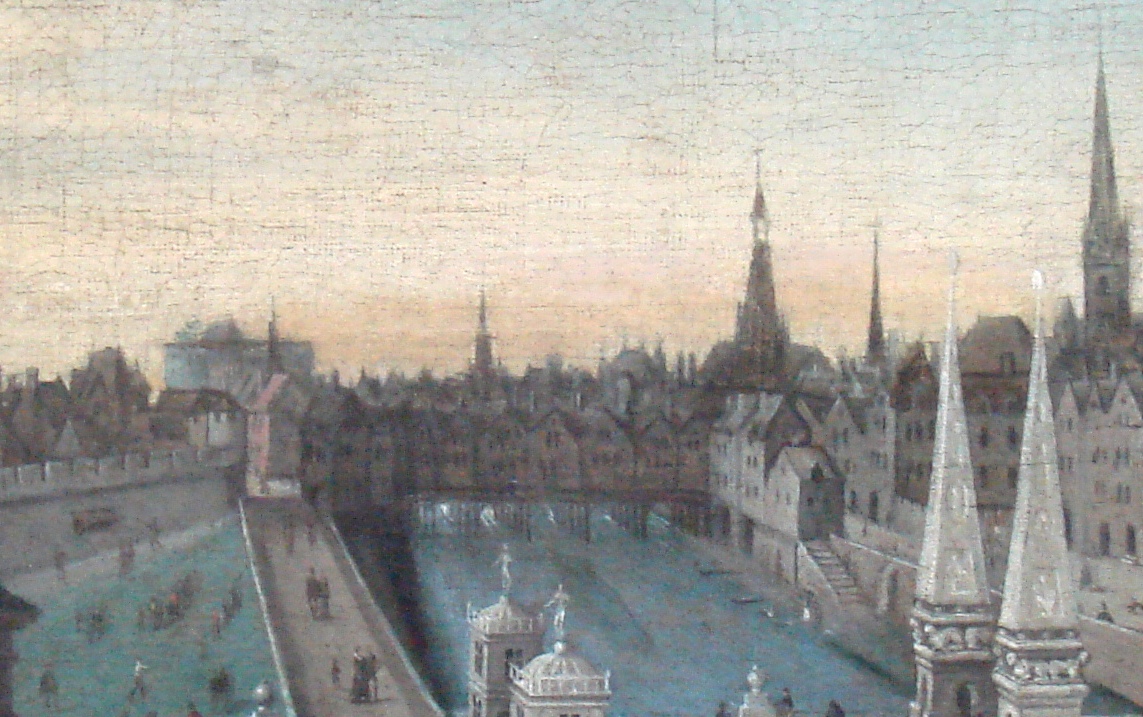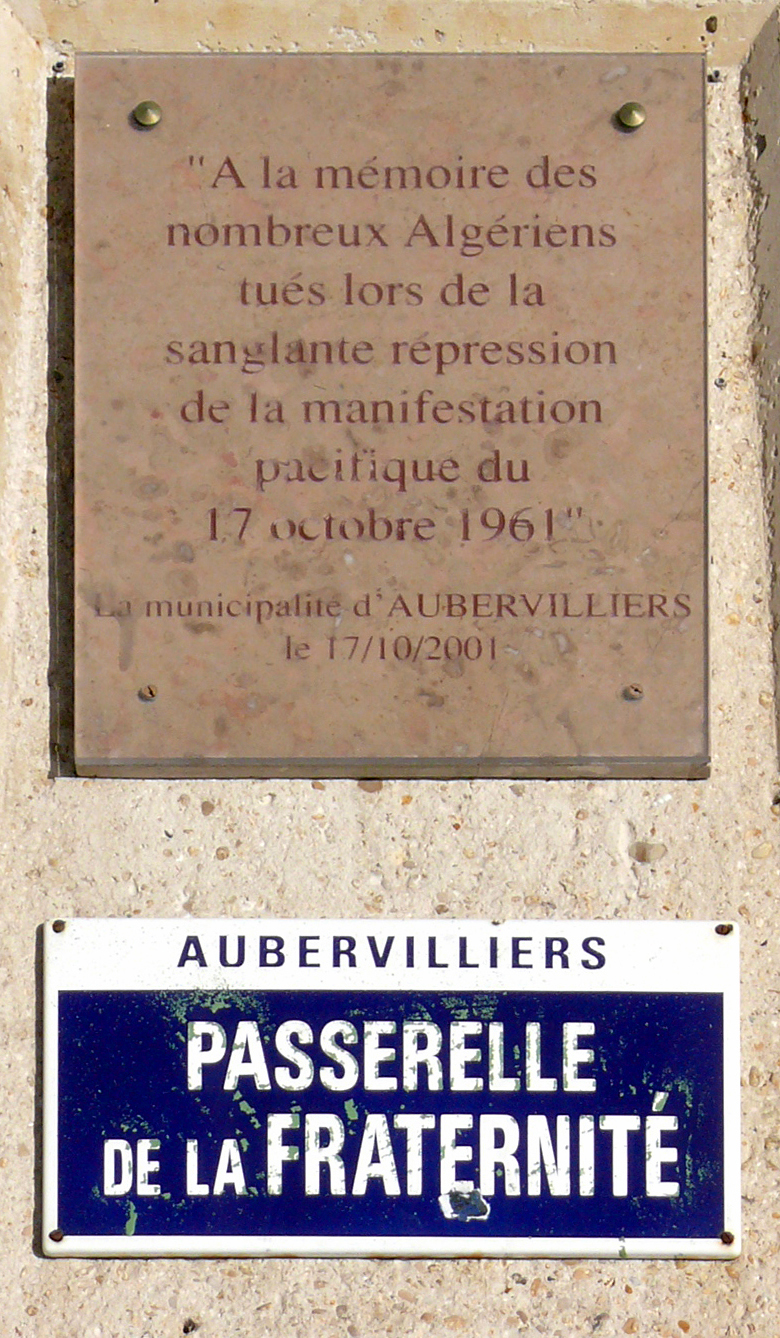Pont Saint-Michel on:
[Wikipedia]
[Google]
[Amazon]
Pont Saint-Michel is a bridge linking the Place Saint-Michel on the
 The appearance of this second bridge is known from one
The appearance of this second bridge is known from one
 A replacement bridge was built at the same time the
A replacement bridge was built at the same time the
 The present 62-metre-long bridge dates to 1857, requiring only seven months for construction, from the date the older bridge was closed to traffic, and was designed on three 17.2m arches by
The present 62-metre-long bridge dates to 1857, requiring only seven months for construction, from the date the older bridge was closed to traffic, and was designed on three 17.2m arches by
Image:Pont Saint-Michel vu du Petit-Pont-20050628.jpg, View from Petit-Pont
Image:Pont Saint-Michel vu du Petit-Pont-closeup-20050628.jpg, View from Petit-Pont
Mairie de Paris site
*
Structurae
Satellite view on Google Map
* (1378–1387) * (1416) * (1549) * (1618–1624) * (current) {{Authority control Saint-Michel Saint-Michel Buildings and structures in the 1st arrondissement of Paris Buildings and structures in the 4th arrondissement of Paris Buildings and structures in the 5th arrondissement of Paris Buildings and structures in the 6th arrondissement of Paris 1857 establishments in France
left bank
In geography, a bank is the land alongside a body of water. Different structures are referred to as ''banks'' in different fields of geography, as follows.
In limnology (the study of inland waters), a stream bank or river bank is the terra ...
of the river Seine to the Île de la Cité
Île de la Cité (; English: City Island) is an island in the river Seine in the center of Paris. In the 4th century, it was the site of the fortress of the Roman governor. In 508, Clovis I, the first King of the Franks, established his palace ...
. It was named after the nearby chapel of Saint-Michel. It is near Sainte Chapelle
The Sainte-Chapelle (; en, Holy Chapel) is a royal chapel in the Gothic style, within the medieval Palais de la Cité, the residence of the Kings of France until the 14th century, on the Île de la Cité in the River Seine in Paris, France.
...
and the Palais de Justice. The present 62-metre-long bridge dates to 1857.
History
First constructed in 1378, it has been rebuilt several times, most recently in 1857.The medieval bridge
The construction of a stone bridge was decided upon in 1378 by theParlement de Paris
The Parliament of Paris (french: Parlement de Paris) was the oldest ''parlement'' in the Kingdom of France, formed in the 14th century. It was fixed in Paris by Philip IV of France in 1302. The Parliament of Paris would hold sessions inside the ...
after an accord with the chapter of the cathedral of Notre-Dame de Paris, the provost of Paris
The Mayor of Paris (french: Maire de Paris) is the chief executive of Paris, the capital and largest city in France. The officeholder is responsible for the administration and management of the city, submits proposals and recommendations to the ...
, and the city's merchants. A location downstream of Petit-Pont was chosen, on the line of Rue Saint-Denis, from the Grand-Pont on the right bank
In geography, a bank is the land alongside a body of water. Different structures are referred to as ''banks'' in different fields of geography, as follows.
In limnology (the study of inland waters), a stream bank or river bank is the terrai ...
and of Rue de la Harpe
The rue de la Harpe is a street in Paris' Latin Quarter. Relatively calm and cobblestoned along much of its length, it runs in a south-easterly direction between the rue de la Huchette and the rue Saint-Séverin, where it turns south-west to wher ...
on the left bank
In geography, a bank is the land alongside a body of water. Different structures are referred to as ''banks'' in different fields of geography, as follows.
In limnology (the study of inland waters), a stream bank or river bank is the terra ...
. This allowed for a direct route across Île de la Cité
Île de la Cité (; English: City Island) is an island in the river Seine in the center of Paris. In the 4th century, it was the site of the fortress of the Roman governor. In 508, Clovis I, the first King of the Franks, established his palace ...
.
The provost, Hugues Aubriot, was charged with overseeing the project, which was funded by the king. Construction lasted from 1379 to 1387. Once complete, the Parisians named the bridge ''Pont-Neuf'' (New Bridge, but it should not be confused with the present-day Pont-Neuf
The Pont Neuf (, "New Bridge") is the oldest standing List of crossings of the River Seine, bridge across the river Seine in Paris, France. It stands by the western (downstream) point of the Île de la Cité, the island in the middle of the ri ...
), ''Petit-Pont-Neuf'' (Little New Bridge) or ''Pont Saint-Michel dit le Pont-Neuf'' (St. Michael's Bridge, known as the 'New' Bridge).
As was common in the Middle Ages, the bridge's sides were quickly filled with houses. During the 1407–1408 winter, one of the longest and most severe known in the Middle Ages, ice carried by the frozen Seine hit the bridge, causing it to collapse, together with its houses. Due to France's difficulties in the Hundred Years' War, the bridge was immediately rebuilt in wood. This material proved less resistant than the previous stone bridge and the Parlement of Paris decided in 1444 to allocate all money raised from fines to building a new stone bridge on the site.
 The appearance of this second bridge is known from one
The appearance of this second bridge is known from one miniature painting Miniature painting may refer to:
* Miniature (illuminated manuscript), a small illustration used to decorate an illuminated manuscript
* Persian miniature, a small painting on paper in the Persian tradition, for a book or album
* Ottoman miniature, ...
in the '' Hours of Étienne Chevalier'', painted by Jean Fouquet
Jean (or Jehan) Fouquet (ca.1420–1481) was a French painter and miniaturist. A master of panel painting and manuscript illumination, and the apparent inventor of the portrait miniature, he is considered one of the most important painters from ...
. This shows a bridge resting on high wooden piers, as well as wattle-and-daub
Wattle and daub is a composite building method used for making walls and buildings, in which a woven lattice of wooden strips called wattle is daubed with a sticky material usually made of some combination of wet soil, clay, sand, animal dung a ...
or wood-and- plaster houses with a single level roofline along the whole length of the bridge.
The Renaissance bridge
 A replacement bridge was built at the same time the
A replacement bridge was built at the same time the Pont Marie
The Pont Marie is a bridge which crosses the Seine in Paris, France.
The bridge links the Île Saint-Louis to the quai de l'Hôtel de Ville and is one of three bridges designed to allow traffic flow between the Île Saint-Louis and the Left a ...
was under construction. Owned by the king, it was more substantial than the Pont Marie and never ran into the kind of structural troubles both the Pont Marie and the Pont Neuf
The Pont Neuf (, "New Bridge") is the oldest standing bridge across the river Seine in Paris, France. It stands by the western (downstream) point of the Île de la Cité, the island in the middle of the river that was, between 250 and 225 BC ...
encountered.
The work started in 1617 and was completed in 1623, using foundations similar to the ones used in the Rialto Bridge
The Rialto Bridge ( it, Ponte di Rialto; vec, Ponte de Rialto) is the oldest of the four bridges spanning the Grand Canal in Venice, Italy. Connecting the ' (districts) of San Marco and San Polo, it has been rebuilt several times since its fi ...
and the Pont des Boucheries. These foundations used wooden piles topped by a wooden platform over which the specifications required lower stone courses of to long by to thick.
Built with four spans in the form of circular arcs, the roadway sloped up to the center of the bridge with a grade
Grade most commonly refers to:
* Grade (education), a measurement of a student's performance
* Grade, the number of the year a student has reached in a given educational stage
* Grade (slope), the steepness of a slope
Grade or grading may also ref ...
of over 6%. The two larger spans were approximately long, while the two shorter spans, on either side, were approximately long. The widest of the old Paris bridges, it was designed to hold two rows of houses. An order was issued in 1786 to remove all houses from Paris bridges, but the ones on this bridge remained until 1808.
The modern bridge
 The present 62-metre-long bridge dates to 1857, requiring only seven months for construction, from the date the older bridge was closed to traffic, and was designed on three 17.2m arches by
The present 62-metre-long bridge dates to 1857, requiring only seven months for construction, from the date the older bridge was closed to traffic, and was designed on three 17.2m arches by Paul-Martin Gallocher de Lagalisserie
Paul-Martin Gallocher de Lagalisserie (29 May 1805, Place Dauphine, Paris – 5 August 1871, Balbins, Isère) was a French engineer. He was the son of Martin Pierre Gallocher de Lagalisserie and Marie Delphine Théodore Ménager.
Notable proje ...
and Paul Vaudrey. It was the site of many of the killings of protesters by the police, in the Paris massacre of 1961
The Paris massacre of 1961 occurred on 17 October 1961, during the Algerian War (1954–62). Under orders from the head of the Parisian police, Maurice Papon, the French National Police attacked a demonstration by 30,000 pro- National Liberatio ...
, and a commemoration plaque on the bridge was unveiled by the mayor of Paris in 2001.
Location
Gallery
Bibliography
* P. Lorentz et D. Sandron, ''Atlas de Paris au Moyen Âge'', Paris, 2006, Parigramme.References
External links
*Mairie de Paris site
*
Structurae
Satellite view on Google Map
* (1378–1387) * (1416) * (1549) * (1618–1624) * (current) {{Authority control Saint-Michel Saint-Michel Buildings and structures in the 1st arrondissement of Paris Buildings and structures in the 4th arrondissement of Paris Buildings and structures in the 5th arrondissement of Paris Buildings and structures in the 6th arrondissement of Paris 1857 establishments in France